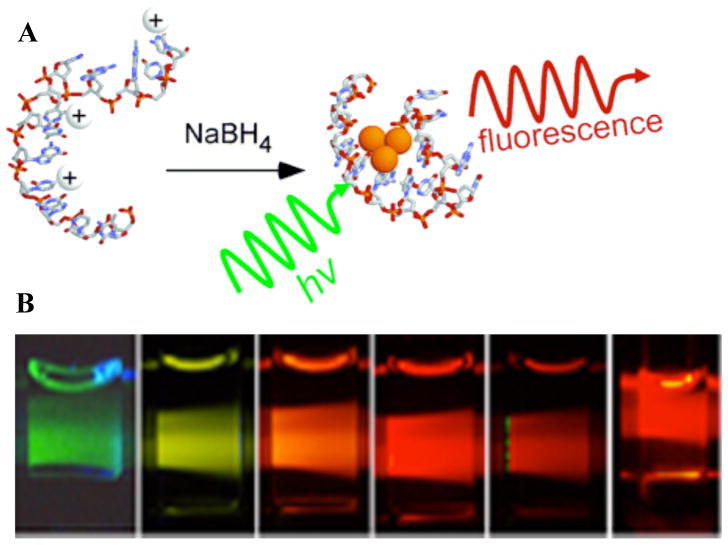Figure 1.
A. (Reproduced from Ref. 21) Schematic of DNA-conjugated silver cluster creation. Ag+ (white ion) preferentially associates with the nucleobases in single DNA strands. Subsequent reduction with BH4− produces small emissive agglomerates of neutral Ag atoms (orange spheres). B. Examples of some of the wide range of spectrally pure Ag cluster emitters that can be made changing buffer conditions and DNA sequences (From Ref. 39 - Reproduced by permission of The Royal Society of Chemistry (RSC) on behalf of the European Society for Photobiology, the European Photochemistry Association, and RSC). Emission maxima (sequence) from left to right: 523 nm (C20), 562 nm (AATTC12), 590 nm (CGAAC12), 615 nm (CGCGC12), 635 nm (ATATC8), 670 nm (GGGGC8). Both the primary sequence and reaction conditions determine the final clusters formed and their associated photophysics.

